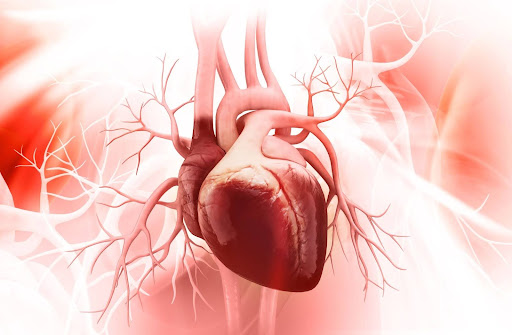
by targetmarket | Apr 15, 2024 | Atrial Septal Defect Repairs
Atrial septal defect (ASD) is a congenital heart defect. If you have ASD, you were born with a hole between the upper chambers of your heart. This hole may cause higher levels of blood to go through the lungs. Known as one of the most common congenital heart defects in children, ASD affects more than 2,000 babies each year. Here at Minimally Invasive and Bloodless Heart Surgery with Dr. Ciuffo, we will explore the types, symptoms, and causes of an atrial septal defect, along with their complications and treatments. Types of ASDs There are a number of ASDs, including: Secundum: Secundum is the most common type of atrial septal defect. It arises in the atrial septum, the wall between the upper heart chambers. Primum: Primum occurs in the lower part of the wall, which is located between the upper heart chambers. It may present itself with other heart issues at birth. Sinus venosus: Sinus venosus is a rare form of ASD. It appears in the upper part of the wall, between the heart chambers, typically with other heart structure changes at birth. Coronary sinus: Coronary sinus refers to the vein system of the heart. It’s also rare and occurs when part of the wall between the part of the vein system of the heart is missing. Symptoms Of ASD It’s not uncommon for a baby with ASD to be asymptomatic. Oftentimes, symptoms begin when an individual reaches adulthood and may include: Shortness of breath, especially during physical activity Fatigue Arrhythmias or irregular heartbeats Swelling in the legs, feet, or belly Palpitations Causes Of ASD At this time, the cause... 
by targetmarket | Mar 29, 2024 | Bloodless Heart Surgery, Heart Surgery
Known as an alternative to open heart surgery, minimally invasive surgery is preferred by many patients. It involves tiny incisions that allow a surgeon to access the heart between the rib bones. This eliminates the need to cut the breastbone. Compared to traditional heart surgery, minimally invasive procedures usually come with less pain and risk as well as a shorter recovery. Here at Minimally Invasive and Bloodless Heart Surgery with Dr. Ciuffo, we’ll dive deeper into the minimally invasive options for high-risk heart surgery. Benefits of Minimally Invasive Heart Surgery There are a variety of advantages of minimally invasive heart surgery. It’s often preferred to high-risk heart surgery because it results in less trauma to the chest and smaller, more discreet scars. It also allows for less blood loss, reduced pain, shorter hospital stays, and a lower chance of infection. How Does Minimally Invasive Heart Surgery Work Every minimally invasive heart surgery is unique. However, most of them involve small incisions in the chest area. You can expect a surgeon to use a special camera device so he can view the heart. During the procedure, you’ll be hooked up to a heart-lung bypass machine so that your blood flow can be maintained throughout the surgery Types Of Minimally Invasive Heart Surgery If minimally invasive heart surgery is an option for you, you’ll work with a surgeon to determine the ideal one. Here’s an overview of some of the most common types of minimally invasive heart procedures: Minimally Invasive Heart Valve Repair: The goal of minimally invasive heart valve repair is to resolve a damaged valve and, in turn, improve... 
by targetmarket | Feb 29, 2024 | Heart Murmur
There’s a good chance you’ve seen your doctor listen to your heartbeat through a stethoscope and look for a heart murmur. Heart murmurs occur when your heart makes an unusual sound. Characterized by a whooshing or swishing sound between heartbeats, a heart murmur is often completely normal and has no cause for concern. In fact, heart murmurs are quite common and often present in healthy individuals without heart problems. Minimally Invasive and Bloodless Heart Surgery with Dr. Ciuffo is here to dive deeper into what a heart murmur is and what you can expect if you or someone you love has one. Types of Heart Murmurs In general, there are two types of heart murmurs, including: Innocent Heart Murmurs Innocent heart murmurs simply mean that there is faster blood flow through the heart valves but there are no problems. They may arise after vigorous physical activity or exercise and are widely seen in patients with anemia or a shortage of healthy red blood cells, or during pregnancy when the heart needs to work more than usual to support the baby. Innocent murmurs are also common in teenagers who are growing at a rapid phase. Abnormal Heart Murmurs Abnormal murmurs can be a symptom of a structural problem in the heart valve or another abnormality that was present at birth or arose later in life. An abnormal heart murmur may also be the result of a heart valve that narrows and hardens, which occurs as we age. It might not show any other symptoms and can only be discovered by a doctor in a stethoscope exam. Symptoms and Causes of... 
by targetmarket | Feb 15, 2024 | Heart Health
If your partner, family member, or friend has a heart problem, your support is invaluable. It can keep them optimistic, boost their mood on difficult days, and help them lead the highest quality of life possible. Here at Minimally Invasive and Bloodless Heart Surgery with Dr. Ciuffo, we’ll share several tips that will allow you to provide the best support for someone with heart problems. Educate Yourself Heart conditions can be complex and difficult to understand, especially if you’re not in the healthcare field or unfamiliar with them. As the support person of an individual with a heart problem, it’s up to you to learn as much as you can. Do your research and consult with medical professionals so you understand what is going on and what needs to be done to manage your friend or family member’s health. Listen and Advocate Simply listening can show your friend or family member you genuinely care about them and their condition. While it may be tempting to offer some advice based on what you read and know, it’s important to hear their thoughts and concerns. Also, if you attend doctor’s appointments, listen carefully to what is said by their healthcare team and bring up any concerns your loved one may forget to mention on their own. Don’t forget to discuss any problems you believe require more attention or have yet to be addressed. Make Lifestyle Changes It’s not uncommon for those with heart conditions to modify their lifestyles. Depending on their situation, they may switch to a Mediterranean diet with plenty of fruits and veggies, whole grains, and healthy fats. They’ll... 
by targetmarket | Jan 15, 2024 | Minimally Invasive, Uncategorized
Coronary artery bypass surgery (CABG) has been a cornerstone in the treatment of coronary artery disease (CAD), providing a lifeline for individuals with blocked or narrowed arteries. Traditionally, CABG involved a sternotomy, a procedure requiring a sizable incision through the chest, but the landscape of cardiac surgery has transformed the way we cure coronary artery disease. Minimally Invasive Coronary Artery Bypass Surgery (MICABG) Unfortunately, many patients are reluctant to consider Minimally Invasive Coronary Artery Bypass surgery and want to opt for a “cheap way out” (stents) that often commits them to even more trouble in the future. Here at Minimally Invasive and Bloodless Heart Surgery with Dr. Ciuffo, we will explore the significance, procedure, benefits, and advancements associated with minimally invasive approaches to coronary artery bypass surgery. Significance Of Minimally Invasive CABG Minimally invasive coronary artery bypass surgery (MICABG) represents huge advancements in the realm of cardiac surgery. This procedure deals with badly clogged pipes (the coronary arteries). During MICABG, a new pipe (a bypass) is connected between the aorta (the equivalent of the main water supply) and the coronary artery segment downstream from the blockage (the “clogged pipe”). This bypass serves the purpose of bringing back a normal flow of oxygenated blood to the portion of heart muscle supplied by the blocked coronary artery The Procedure Patient Selection Not all patients are candidates for MICABG, and eligibility is determined based on factors such as the location and severity of coronary artery disease, overall health, and more. Anesthesia MICABG typically involves general anesthesia to ensure that the patient is unconscious and pain-free throughout the surgery. Small Incisions Instead of...





